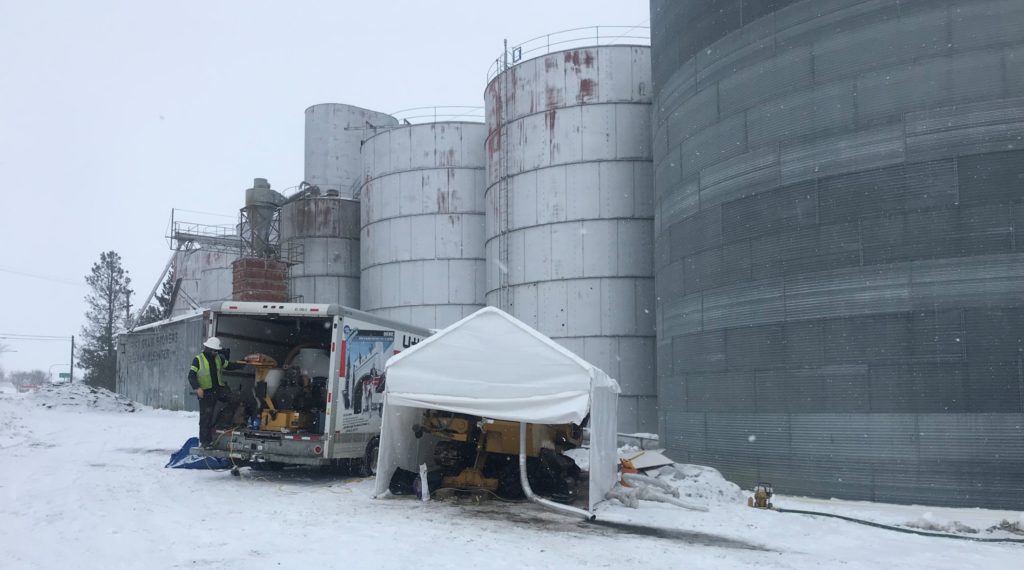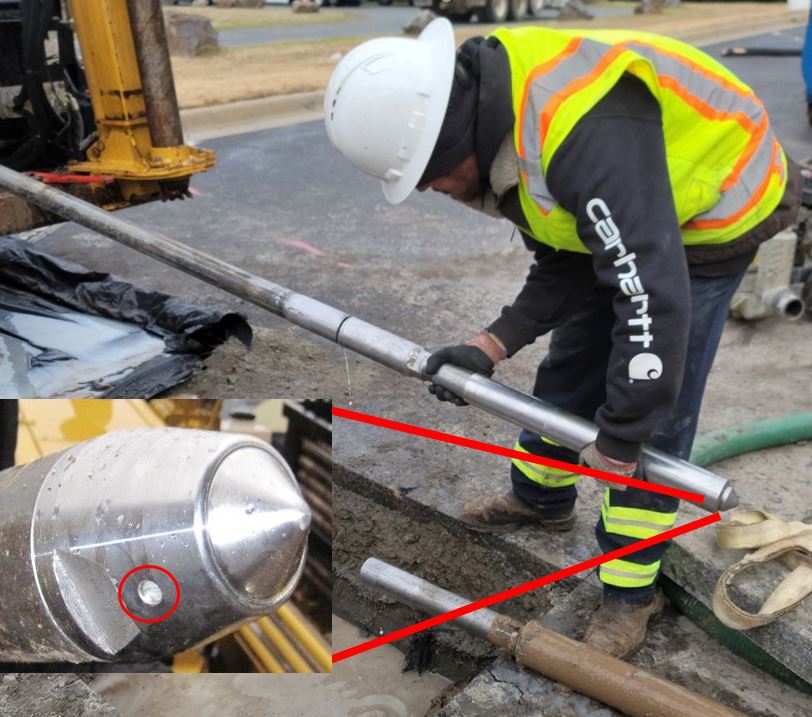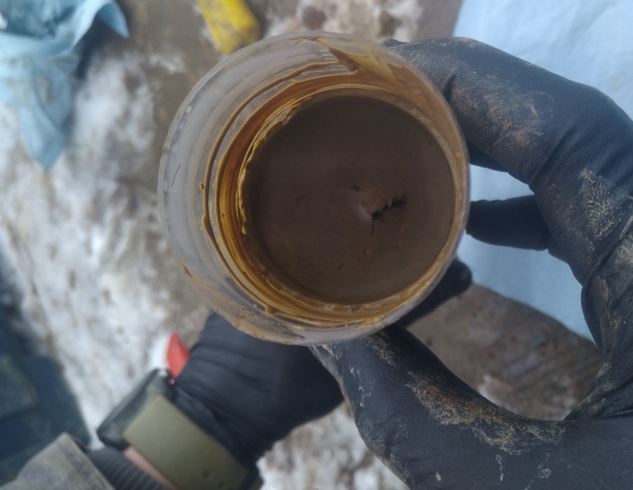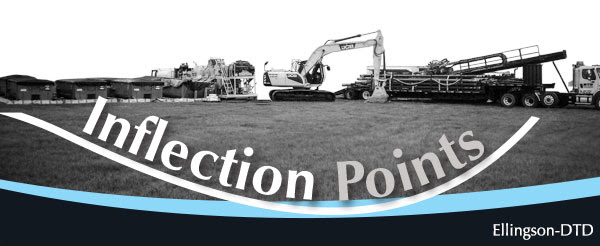Horizontal Soil Sampling
Volume 8, Issue #5 – May 2022
One question we hear frequently: Can you soil sample using HDD?
Unlike with many drilling topics, we don’t have a wishy-washy answer for this; we absolutely can!
Of course, there are still several caveats and intricacies worth noting, which is what this month’s newsletter is all about.

Fig1: Using HDD to collect discrete soil samples beneath fully stocked grain silos
Discrete Soil Sampling Using HDD
The basic process of collecting a discrete soil sample with HDD is simple enough. We drill using direct mud rotary and a standard pilot bit, steering towards the target interval.
Once the target is reached, the driller trips back the pilot bit and replaces it with a specialized soil sampling tool. Then he trips back down the pilot bore with the tool and sample barrel.
The sample barrel must seal off during the trip through the open bore to prevent sloughing of loose material or drilling mud into the sample chamber. There are several different sample barrel designs Ellingson uses, including set-screw and piston-tip style samplers.

Fig2: The set-screw style sampler is one of several sampling tools Ellingson uses to collect HDD soil samples.
Once the sampling assembly reaches the end of the pilot bore, the driller pushes it into the undisturbed formation. The force from the native soil releases the set screw or piston tip, allowing a soil sample to be collected.
Next, the barrel, now full of soil, is tripped back to the rig where the sample can be retrieved and logged/analyzed.
Finally, the pilot bit replaces the sampling assembly, and the driller runs back down to the terminal length of the bore to continue drilling towards the next sample interval.
Slow and Steady
For those of you keeping score at home, that is 2 round trips of the tooling per sample stop.
In other words, the process is quite tedious, which means our daily production rates (in terms of samples collected) can be extremely low, especially if the target intervals are far out from the entry point.
Now anyone who has spent time in the geotechnical industry might be thinking, “That sounds like rotary wash sampling to me. Sure, it’s kinda tedious, but why would it be slow?”
The difference is the orientation of our derrick. Horizontal rigs must use the drill machine’s hydraulics both to advance AND retract the drill string. While vertical rotary wash drilling enjoys the advantage of winch lines and headache racks to quickly trip out tooling and handle it without necessarily replacing it in the rod rack.
Other Limitations
In addition to the slow productivity rate, there are a few other important limitations to keep in mind.
As with any HDD application, borehole collapse is a constant challenge. In very loose materials like heaving sands, gravels or cobbles, caving material might prevent tripping the sample barrel in and out of the bore to total length.
Another difference between HDD sampling and other vertical soil sampling methods is the lack of a hammer. When collecting the sample, the HDD rig shoves the barrel into native formation using the static force of the rig’s hydraulics.
Unlike in direct push, geotechnical or sonic sampling applications, there is no hammer or vibratory action. This lack of percussive force sometimes limits a full sample recovery. Particularly in “sticky” fines and clays, the sample barrel sometimes plugs off, returning only partial sample recovery.

Fig3: Fine clays can sometimes plug off in the sample liner, retrieving a poor recovery percentage.
Of course, some sites need a water or vapor sample, but really don’t want a permanent monitoring point for whatever reason. In most of those cases, we still end up building a conventional “well” it’s just defined as a temporary point and quickly removed once the sample is collected.
If you’re looking for a way to collect grab groundwater or soil gas samples through the drill tooling using HDD, that technology remains experimental.
Although we’ve explored the idea of converting vertical screen-point sample tooling to be deployed in a horizontal orientation for this purpose, we’ve never actually had the chance to do it. (If you have a project, please give us a call!)
When There is No Other Way
The combination of slow production, and higher day rates for HDD rigs (relative to their vertical counterparts) makes soil sampling via HDD economically infeasible for all but the most impossible access challenges.
When advising clients on HDD sampling, we’ll typically admit that if there is literally ANY way to obtain the samples using vertical drilling technology, it will probably make more sense to go that route.
However, when vertical alternatives are totally non-existent, HDD can indeed provide those samples. Projects typically involve not only difficult access at the surface but some limitation below that can’t be drilled through.

For example, on the project featured above, discrete soil sampling targeted 5 ft below ground surface immediately beneath 60ft diameter silos at a grain storage facility. In this case, putting a drill rig inside of the silo and drilling through the bottom was not just an inconvenient access issue; it was physically impossible.
Other project examples include sampling underneath above ground storage tanks, beneath a lined landfill cell, under a nuclear facility, or below occupied residences.
In these types of cases where vertical methods are simply not an option, it’s then up to the project team, stakeholders, regulators etc. to determine how important those samples are and whether the additional costs of obtaining them using HDD are warranted.
Tags: environmental remediation, HDD, site characterization, soil sampling
